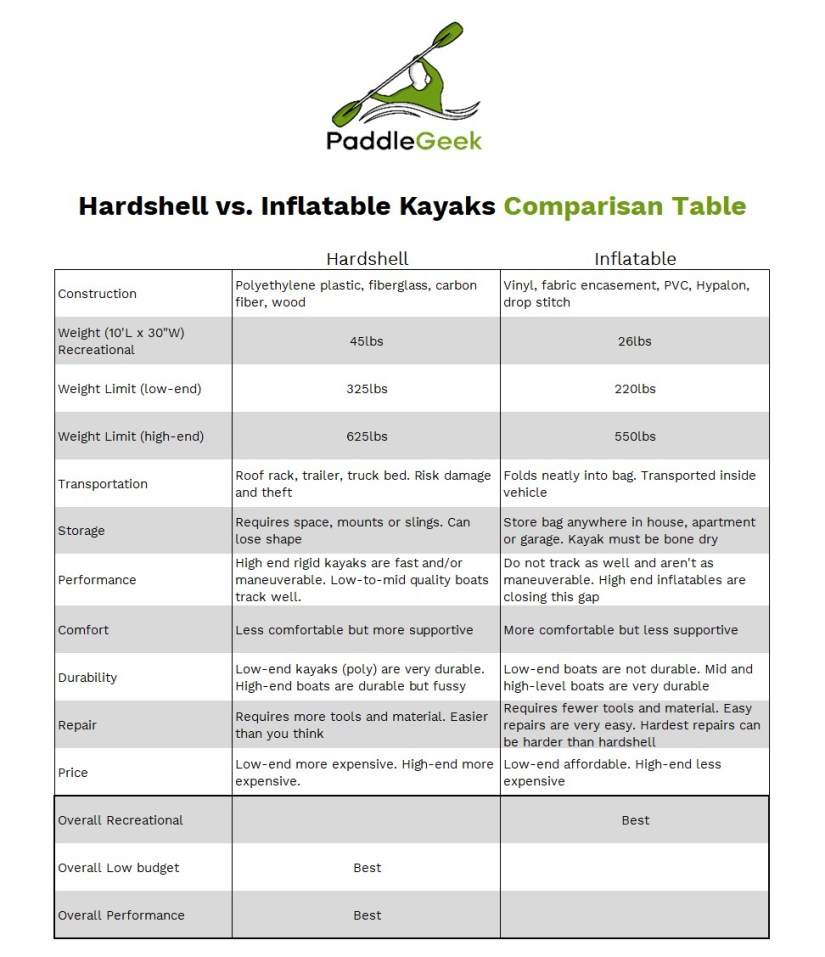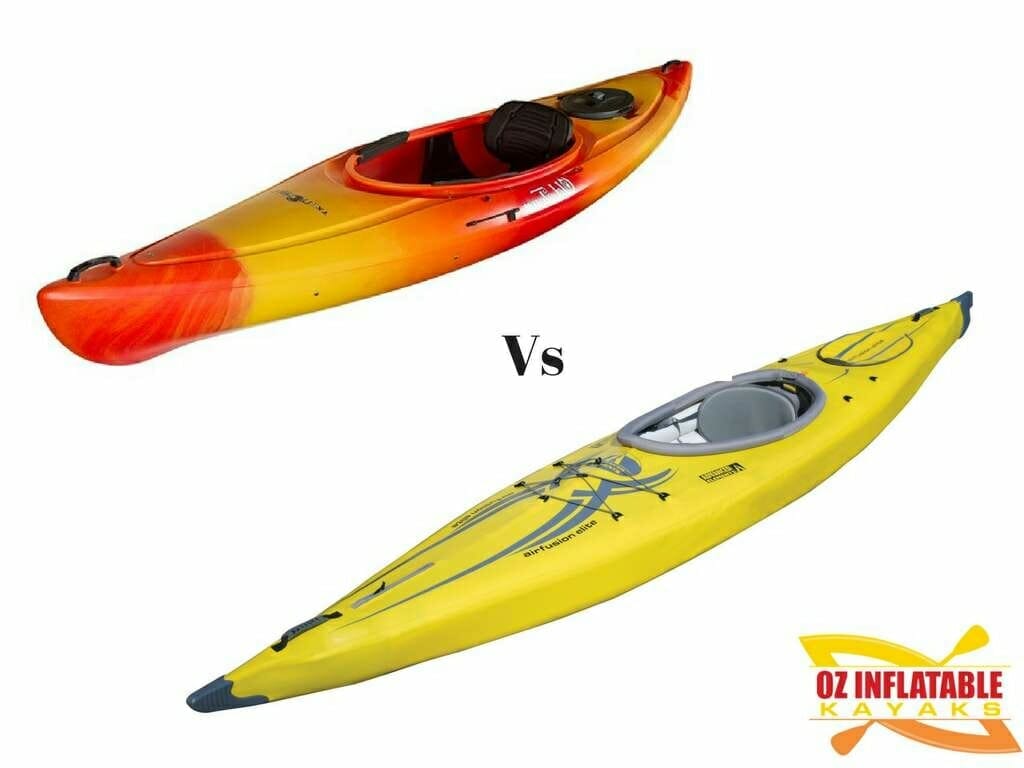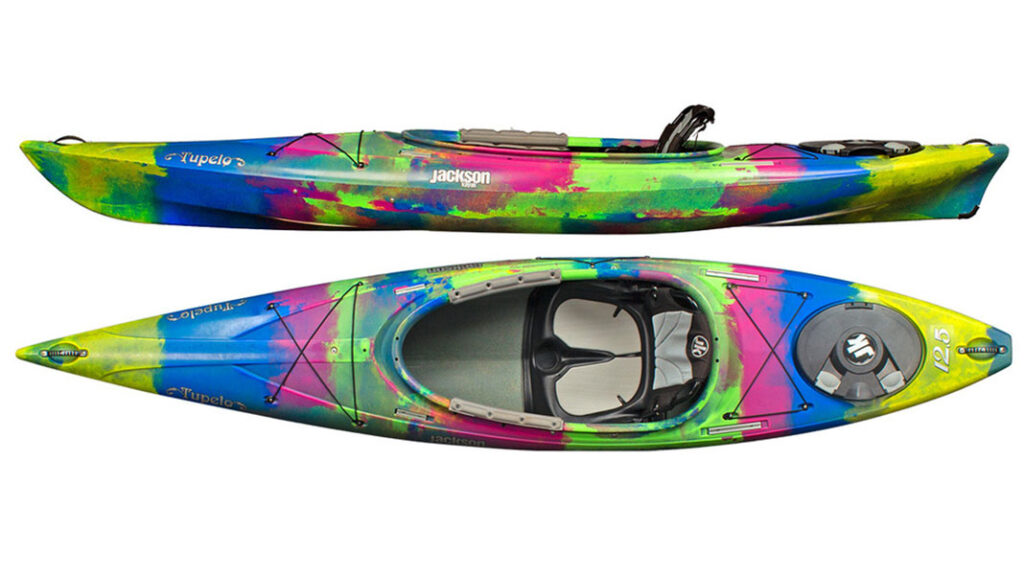
Have you ever wondered whether inflatable kayaks are better than hardshell ones? Well, let’s dive into the fascinating world of kayaking and explore the differences between these two types of kayaks! In this article, we’ll discuss the pros and cons of inflatable kayaks and hardshell kayaks. So, whether you’re a beginner or an experienced kayaker, you’ll find valuable insights that will help you make an informed decision.
Let’s start with inflatable kayaks. These kayaks are extremely convenient, especially if you’re short on storage space or if you frequently travel and want to bring your kayak along. They are lightweight and can be easily deflated, making transportation a breeze. Additionally, inflatable kayaks are generally more affordable compared to hardshell ones, making them a great option for budget-conscious kayakers. However, one downside of inflatable kayaks is that they are more susceptible to damage. While some models are made with durable materials, they may not withstand sharp rocks or rough handling as well as hardshell kayaks. Nevertheless, in our upcoming article, we’ll explore different types of inflatable kayaks and discuss their durability, so you can make an informed choice. Stay tuned for more information on inflatable kayaks versus hardshell kayaks!
Inflatable Kayaks Vs Hardshell

Introduction
If you’re an outdoor enthusiast who loves spending time on the water, kayaking might be one of your favorite activities. Whether you’re exploring tranquil lakes or tackling rapid rivers, having the right kayak can make all the difference. Two popular options in the market are inflatable kayaks and hardshell kayaks. In this article, we’ll compare the two and help you decide which one suits your needs best.
Factors to Consider
Durability
When it comes to durability, both inflatable and hardshell kayaks have their pros and cons. Inflatable kayaks are typically made from durable materials such as PVC or Hypalon, which give them strength and resilience against punctures and abrasions. On the other hand, hardshell kayaks are constructed from rigid materials like polyethylene or fiberglass, offering excellent durability but with a higher chance of scratches and damage on rocky surfaces.
Portability
If you love exploring different water bodies or if storage space is limited, portability becomes a crucial factor. Inflatable kayaks excel in this aspect as they can be deflated and easily packed into a compact size. Once deflated, they can fit into a backpack or a small storage bag, allowing you to transport them hassle-free. Hardshell kayaks, on the other hand, require a proper roof rack or a trailer to transport due to their rigid structure and size.
Stability
Stability is another key consideration, especially for beginners or those who are less confident on the water. Inflatable kayaks tend to have a wider base, providing better primary stability. The added buoyancy from the inflated chambers offers a stable platform and makes it easier to balance. Hardshell kayaks, while initially less stable, offer greater secondary stability due to their fixed shape, making them more suitable for rougher waters and advanced maneuvers.
Durability
Materials Used
Inflatable kayaks are typically made from PVC (Polyvinyl Chloride), Hypalon, or Nitrylon materials. These materials are known for their resistance against punctures and UV damage, ensuring a long lifespan for your kayak. Hardshell kayaks, on the other hand, are commonly made from polyethylene, fiberglass, or carbon fiber. These materials provide excellent durability but are more prone to scratches and can be damaged by impacts against rocks or other hard surfaces.
Resistance to Damages
Inflatable kayaks have the advantage of having separate air chambers, which means that even if one chamber gets punctured, the kayak will remain afloat. Some models also come with reinforced bottoms to protect against sharp objects in the water. Hardshell kayaks, although more susceptible to scratches and damages, can be repaired with patches and proper maintenance.
Portability
Weight
When it comes to weight, inflatable kayaks are the clear winner. They are significantly lighter compared to hardshell kayaks, making them easier to carry and transport. This lightweight feature also benefits solo paddlers who may need to handle their kayak on their own.
Ease of Transportation
Inflatable kayaks are incredibly convenient in terms of transportation. Besides being lightweight, they can be deflated and packed into a compact size, which allows you to transport them in the trunk of your car or even carry them as checked baggage on a flight. Hardshell kayaks require specific transportation equipment such as roof racks or trailers, which can limit their ease of transportation, especially for those without a dedicated vehicle.

Stability
Primary Stability
Inflatable kayaks offer excellent primary stability due to their wider base and inflatable chambers. This stability makes them a great choice for beginners or those who prefer a more relaxed and stable paddling experience. You can have peace of mind knowing that your kayak won’t easily tip over even in calm waters.
Secondary Stability
Hardshell kayaks, although initially less stable, provide superior secondary stability. This means they can handle rougher waters and are more responsive to advanced paddling techniques. Once you find your balance, you can confidently take on more challenging conditions and enjoy the thrill of maneuvering through rapids or surfing ocean waves.
Performance
Speed
When it comes to speed, hardshell kayaks have the advantage. Their sleek design and rigid structure allow them to cut through the water with minimal resistance, resulting in faster speeds. If you’re someone who enjoys covering long distances or engaging in competitive kayaking, a hardshell kayak might be a better choice for you.
Maneuverability
Inflatable kayaks have a more forgiving nature and are easier to maneuver, especially in tight spaces or shallow waters. Their wider base and buoyancy offer better stability and control, making them suitable for recreational paddling and exploring narrow rivers or secluded coves. Hardshell kayaks require greater skill and technique to maneuver efficiently, which might be appealing to experienced kayakers looking for a challenge.

Maintenance and Repair
Cleaning
Both inflatable and hardshell kayaks require regular cleaning to maintain their performance and longevity. Inflatable kayaks can be easily cleaned with a mild detergent, water, and a soft brush. Hardshell kayaks, on the other hand, can be cleaned with a water hose or sponge, taking care to remove any debris or dirt from crevices. It’s important to note that hardshell kayaks may need more frequent cleaning due to their exposed surface.
Patch and Repair Kit
While inflatable kayaks are more resistant to damages, they may occasionally require patching. Most inflatable kayak manufacturers provide a repair kit along with the purchase, containing patches and adhesive for quick and easy repairs. Hardshell kayaks can also be repaired using fiberglass repair kits or similar materials. It’s crucial to perform timely repairs to avoid further damage and keep your kayak in top condition.
Cost
Initial Investment
When it comes to the initial investment, inflatable kayaks are generally more affordable compared to hardshell kayaks. The cost of an inflatable kayak can vary depending on the brand, size, features, and materials used. Hardshell kayaks, being more durable and often made with higher-quality materials, tend to come with a higher price tag. However, the initial cost should be considered in conjunction with long-term expenses and durability.
Long-term Expenses
While hardshell kayaks may have a higher upfront cost, they are generally more durable and less prone to damages. This can help offset the initial investment over time. Inflatable kayaks, although more affordable, may require occasional repairs or replacement of parts such as valves or inflatable chambers. It’s essential to consider long-term expenses and the expected lifespan of the kayak to make an informed decision.

Environmental Impact
Material Waste
When it comes to environmental impact, both inflatable and hardshell kayaks have their pros and cons. Inflatable kayaks require the use of synthetic materials such as PVC, which can have a negative impact on the environment during production and disposal. However, they tend to have a longer lifespan, reducing the need for frequent replacements. Hardshell kayaks, although made from durable materials, can contribute to material waste when they reach the end of their lifespan and are not easily recyclable.
Carbon Footprint
The carbon footprint of kayaking largely depends on how the kayak is manufactured, transported, and used. Inflatable kayaks, being more compact and lightweight, require less transportation fuel and have a smaller carbon footprint during transportation. Hardshell kayaks, on the other hand, may result in a higher carbon footprint due to their heavyweight and need for specialized transportation equipment. It’s important to consider factors such as manufacturing practices and usage frequency to minimize the impact on the environment.
Conclusion
When it comes to choosing between inflatable kayaks and hardshell kayaks, it ultimately boils down to your specific needs and preferences. If you value portability, ease of transportation, and stability, an inflatable kayak might be the ideal choice for you. On the other hand, if you prioritize speed, maneuverability, and long-term durability, a hardshell kayak might be more suitable. Whichever option you choose, always remember to prioritize safety, maintain your kayak properly, and enjoy the countless adventures that await you on the water. Happy paddling!








